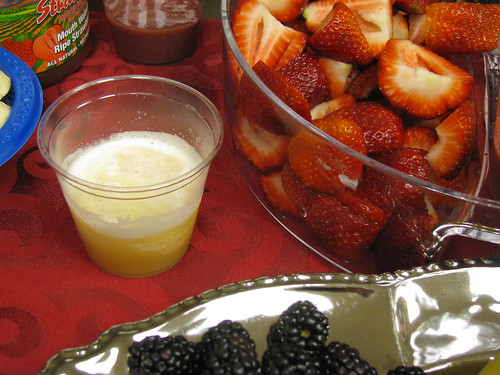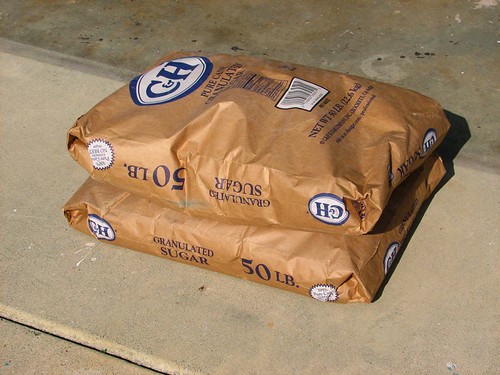 |
| http://www.flickr.com/, photo by M. Gifford |
Why choose a salad over a burger? Why eat grapes instead of Whoppers? Some people really just want to be skinnier, not healthier. If that’s the case with you, there are certainly easier ways to go about it than breaking a sugar addiction, searching for raw cheese, and avoiding hydrogenated oils.
Do you remember Brach’s Gum Dinger candy? They were kind of like blow pops without a stick, and I think they were cherry flavored. The grocery store across from my junior high school used to carry them in the bulk candy section, and we’d buy them by the bagful.
Believe it or not, I actually had friends who went on a “Gum Dinger Diet.” Since the candy had a wad of gum inside it, they would suck on the candy as long as they could, then they’d chew the gum as long as they could in place of breakfast, lunch, snacks, etc.
So, could a person really lose weight eating nothing but candy? I suppose it’s possible, but can you imagine how unhealthy that would be?
Likewise, a person going on a diet just to get skinny is going to miss out on some great health benefits. Instead of suffering through yet another diet, you could actually change your lifestyle in order to really reach a point where you experience great health, feel good, have more energy, and greatly reduce your risk of a ton of illnesses and diseases.
You must have a reason to make this kind of shift, though, because we all know it requires a lot of effort. So, I'm asking you: Why do you want to be healthy?
Personally, I have a huge list of reasons for our family getting healthy: For starters, I don’t want my husband to be a prisoner to prescription medications, I don’t want my daughter, who has a fever condition, to have to spend her childhood in bed, I don’t want to dread getting up every morning because it just feels so much better to lie around...
Even more than any of those reasons, though, is that I know God created me with a specific purpose, and I don’t want to miss out on the life He intends for me to live because I haven’t taken care of myself.
What is your reason? Do you want to be in great health so you can take more mission trips after you retire? Do you want to be there to see your grandchildren enter this world and grow up? Do you want to be able to play with your children without feeling exhausted?
Unless you have at least one real, tangible reason for wanting to take control of your health, you probably won’t take it seriously. Looking hot in skinny jeans is not going to be enough. If that’s all you want, try the Gum Dinger Diet!
Our Monday Challenge today is for you to make a list of your reasons for wanting to live a healthier lifestyle. You might only have one really big reason, or you might have a lot of different ones. Write them down, share them with your spouse or best friend, print them out, and put them up someplace where you will see them every day.
When living a healthier lifestyle seems too hard to maintain and that chocolate cake looks too good to resist, refer back to your reasons for some extra motivation.
Check out the video, Your Big “Why" about a doctor who found his big "Why" through his grandmother's failing health.
I’d love to hear about your big “Why!” Email me at lifeunrefined@gmail.com or include your big “Why” in the comments below!
"Like" Life, Unrefined on Facebook! Click here.











